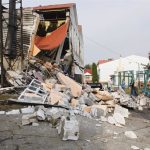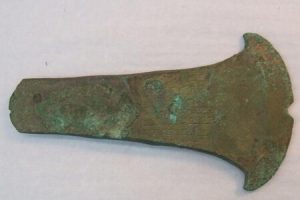14 years ago, in China, there was a traffic jam that leaves anyone we have experienced on New Year's in diapers. It makes those you see in Los Angeles on Thanksgiving Day become an anecdote and even those you line up when buying tickets for a concert are laughable. And it is not so much because of the enormous retention of 100 kilometers, but because of its duration: almost two weeks in August 2010.
It is considered the biggest traffic jam in the world, and there are those who took advantage of it to have a great time. Literally.
The collapse of the G110. The image that opens this article is terrifying, but even so it is not that of the great G110 traffic jam. It is the name of National Highway 110 that connects Inner Mongolia with Beijing and it is something that was seen coming. This road has a length of about 1,100 kilometers and has been the protagonist on several occasions due to its traffic jams. In 2004 there was a massive traffic jam due to traffic being diverted from another highway and it is normally a congested road, but nothing like what we experienced in 2010.
The development of China during that decade increased traffic in the region by 40%, so traffic jams were very frequent, but in mid-August 2010, the road collapsed, with moments in which surpassed by 60% the maximum capacity of the road.
Camping in the traffic jam. It all started on August 13 and there was congestion, but we already said that it was not something out of the ordinary. However, those days there was a considerable increase in trucks on the road due to maintenance work on the road itself (with reduction traffic by 50% during certain hours) and progress was very slow due to the numerous tolls. These two factors, together with the usual traffic, caused a traffic jam of such magnitude that the cars moved at a terrifying speed: one kilometer a day.
The authorities enabled exits, so many vehicles could take those secondary roads, easing the situation, but it is estimated that thousands of citizens had to spend at least a day in their vehicle. In fact, there are reports of people who passed five days in their vehicles. There were many images of drivers who relieved themselves in the bushes on the shoulders and showered with the water they carried.
Shark mentality. Within the chaos and impotence, people tried to kill time as best they could, organizing games and card games in the vehicles, but those who did not have such a bad time were the inhabitants of the towns and cities near the traffic jam. Basic goods such as instant noodles or water began to be sold at triple their usual price. Cigarettes were also marketed at a price inflated and, to give us an idea, if a bottle of water normally cost 1 yuan, the price shot up to 15 yuan. From about 15 cents to almost two euros per bottle. Thefts were also reported, including that of gasoline directly from vehicles thanks to improvised siphons.
In fact, street markets began to be set up, converting bicycles into authentic shops with wheels to cover more ground. This situation was repeated day after day during the more than ten days that the traffic jam lasted and, while some were making a killing, others were losing money. An example is that of fruit truck drivers, who lost their cargo, but also those transports that suffered an increase in costs due to lost time.
Blame the coal. Partly. Two other important factors are added to the works and tolls. On the one hand, the fleeting development from China. During the first years of the 2000s, the number of vehicles sold in the country multiplied, but the infrastructure did not advance in the same way as the car fleet increased. This great demand made the factories need more materials, but also more energy and the G110 is an essential route to transport goods to the factories, so more trucks carrying goods were also put into operation.
And, furthermore, there is the issue of coal. The production of this resource increase considerably in the mines of Inner Mongolia and was transported to Beijing, mainly, this road. The destination is the coastal area of the east of the country, as well as the energy plants and, with this explosion in the production of both vehicles and energy, there were a large number of trucks with coal, some of them overloaded and, therefore, more police checks. The result was a cocktail that caused this monumental traffic jam that began to improve on August 23 with measures to ease traffic and facilitate entry into Beijing.
Sao Paulo is not far behind. The truth is that the images of National 110 are spectacular and the traffic jam went down in history both for the number of vehicles involved and for the time that was lost in it. However, the 100 kilometers of traffic jams are nothing if we compare them with traffic jams like the one in Sao Paulo in 2014. Not so much time was lost, but 344 kilometers of congestion were recorded, a true madness that is not unknown to the inhabitants. of the city, since they usually pass four hours a day on the highway just to get through the city.
Image | australian cowboy
In Xataka | I have seen how Tesla manufactures an electric car every 45 seconds at its Gigafactory in Berlin and I have been impressed





![[Img #74133]](https://thelatestnews.world/wp-content/uploads/2024/10/Radio-signals-sent-between-TRAPPIST-1-planets-150x150.jpg)





![[Img #74133]](https://thelatestnews.world/wp-content/uploads/2024/10/Radio-signals-sent-between-TRAPPIST-1-planets-300x200.jpg)

